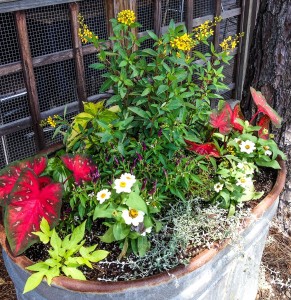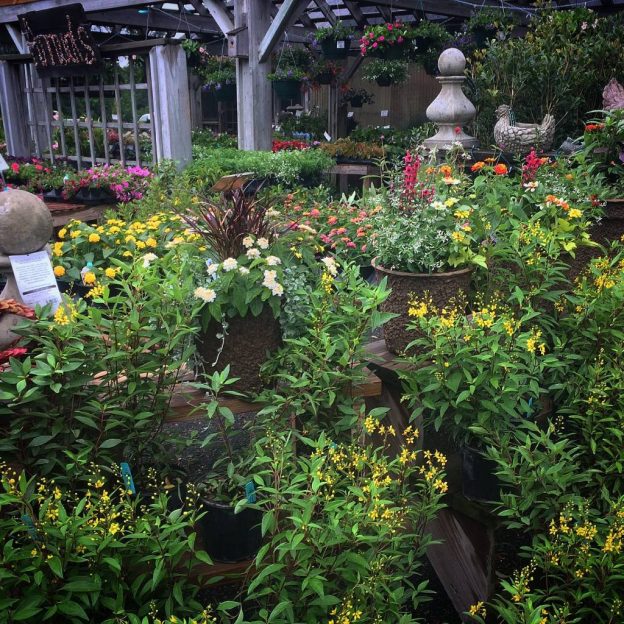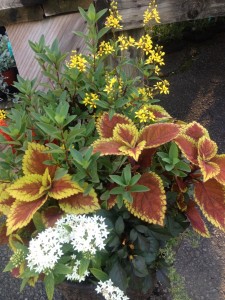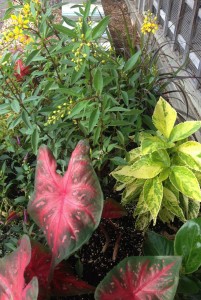May and June are prime months for tropical plants to enter the garden picture, as temperatures during the day (and night) are finally warm enough for these tender flowering beauties.
 The most common and widely grown is a native of South Africa, Plumbago auriculata, a shrubby white or blue bloomer that’s typically used in container plantings in sun to part sun. If you haven’t tried it and prefer either color in your garden or planters, it’s a lovely and tough addition. An occasional light clip and fertilizer to keep new growth and buds coming are all it requires.
The most common and widely grown is a native of South Africa, Plumbago auriculata, a shrubby white or blue bloomer that’s typically used in container plantings in sun to part sun. If you haven’t tried it and prefer either color in your garden or planters, it’s a lovely and tough addition. An occasional light clip and fertilizer to keep new growth and buds coming are all it requires.
Another of my favorites of the last few years in container plantings, and pictured here, is Thryallis, Galphimia glauca, a floriferous yellow tropical that also blooms through the summer and is quite carefree. A native of tropical areas extending from Mexico to Guatemala in Central America, it likes it hot and soil that’s not soggy but well drained; take care to not overwater.
Since it will get quite robust by the end of the season, place it in a large container or bed and let it go. It will be at its best in full, hot sun, ideally in a spot that’s protected from a lot of wind. Finally some good news for any of you that deal with deer issues – they don’t like it and won’t touch it (Though we won’t make any promises!).
We have plumbago and thryallis in stock now if you’d like either of these tropical beauties to brighten your summer garden. They won’t disappoint!
By Kris Blevons




 While all caladiums appreciate heat and shade, there are some that can also handle sun, including ‘Red Flash’, the one shown here. These deep red leaves will mingle with the other foliage and flowers, including a copper plant, Acalypha ‘Tahitian Gold’. It was chosen for its yellow foliage to echo the yellow blooms of the thryallis. The acalypha and a red fountain grass will grow up tall, providing a nice backdrop to this composition.
While all caladiums appreciate heat and shade, there are some that can also handle sun, including ‘Red Flash’, the one shown here. These deep red leaves will mingle with the other foliage and flowers, including a copper plant, Acalypha ‘Tahitian Gold’. It was chosen for its yellow foliage to echo the yellow blooms of the thryallis. The acalypha and a red fountain grass will grow up tall, providing a nice backdrop to this composition. Since it is a restaurant, after all, and ornamental peppers were plentiful in the nursery, those were placed next, just in front of red Dragonwing begonias. Eventually the peppers might be enveloped by the other plants, but until then they’ll contribute their small white flowers and ornamental purple peppers to the mix,
Since it is a restaurant, after all, and ornamental peppers were plentiful in the nursery, those were placed next, just in front of red Dragonwing begonias. Eventually the peppers might be enveloped by the other plants, but until then they’ll contribute their small white flowers and ornamental purple peppers to the mix,